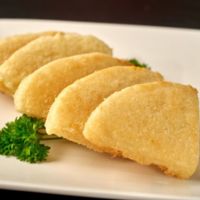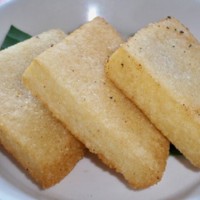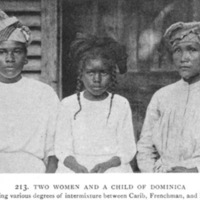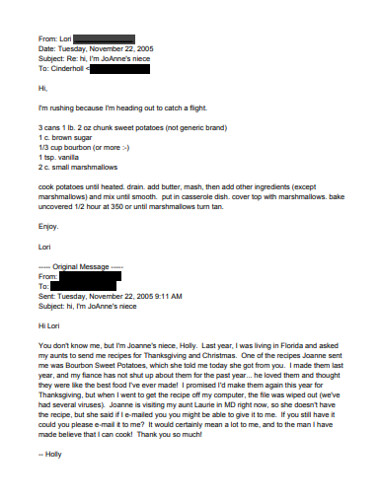Browse Exhibits (11 total)
1: About
Mission Statement
Our hope is to contribute to Postcolonial Digital Humanities by showcasing ground provisions in the Caribbean. As we engage in this project, we remain cognizant of the perspective and cultural privilege tied to our location in New England region as well as to the ways that New England has been profoundly shaped by thw work Caribbean slaves. By way of ground provisions, we attempt to look at the legacy of the Caribbean and its extension throughout the Global North in ways that open space for previsouly buried voices.
A Glossary of Terms
This is a glossary of terms for the ground provisions, race and ethnicity, and the Caribbean locations mentioned throughout Provisions.
Botanical History of Yams in the Caribbean

The purpose of this exhibit is to share the botanical history of yams, tracing them from their beginning in Africa, throughout their journey across the Atlantic during the Middle Passage, to the provision grounds in the Caribbean. It is my hope that this exhibit will provide people with the ability to see the way that texts about ground provisions (in this case, the yam) allow readers to unearth information about the lives of slaves from various parts of the Caribbean, a task that is not necessarily easy while reading through the text of colonists (who tend only to focus on the lives and perspectives of other colonists).
“The history of life is inextricably related to the history of soil” David Montgomery, Dirt
From Sustenance to Snack: The History of the Bammy

This exhibit provides a brief outline and history of the Bammy (known also as the Bammie, Cassava Cake, or Cassava Bread), a food that has undergone a historical transformation from basic provision to beloved snack.
This exhibit seeks to highlight a staple food in the Caribbean, though the focus will be on its history in Jamaica, where, despite global commercialization, this food is still culturally relevant.
Further, this exhibit draws primarily on sources, historical and contemporary, written and created by, and/or about Jamaicans or those with Jamaican heritage.
Though this exhibit was not able to offer explicit translations, please acccess this link below to translate any of the included text.
Good Gourd: Pumpkins In The New World by Patrick Morse

This project traces archaeological and literary records to reveal some of the pumpkin's origins, rooting the cultural record in its proliferation throughout the Americas and West Indies. The research conducted shows the tracing of the Cucurbita or Cucurbitaceae variants across continents, seas, and generations until they are encountered by colonial settlers. Like the Cucurbita, the indigenous people of the continent were subject to generalization and made homogenous despite their cultural nuances. However, if botanists can now decode the development of a gourd through phytology, then the cucurbita can aid the resurrection of indigenous integrity.
This map spans regions of Central/South America and the Caribbean across centuries to illustrate the prominent uses and value of pumpkins and squash, Cucurbita Moschata, leading up to their colonial use as a provision. Archaeological and sociological evidence reveals that the pumpkin was more than a provision; it' ceremonial significance and domestic cultivation was altered when it was discovered among the Amerindians of the new world by European colonizers. Their relegation to a provision crop illustrates a metaphor for the colonial evisceration of native values, culture, and humanity.
Jamaican Bammy Cakes: Indigenous Food or Cultural Commodity?

Centered around a traditional Jamaican dish, bammy cakes, this digital exhibit seeks to present home cooks with a deeper understanding of the historical and cultural aspects of the traditional dish well as the cassava as a whole. The project aims to educate those interested in Caribbean cuisine through a exploration of native cassava production, colonial influence, and global impacts in today's food market.
Pepper Pot: The Allegorical Dish of Caribbean Culture

This exhibit provides an overview and description of the Caribbean dish ‘pepper pot’ and elaborates on how the preparation and use of this dish echoes the efficiency and effectiveness of provision grounds. Inspired by its inclusion in Jamaica Kincaid’s poem “Girl” and the Caribbean cultural philosophy of ‘making do,’ the exhibit seeks to showcase the embracing of that philosophy within this staple of Caribbean Cuisine
Pumpkin (Then & Now) - Dori Clayton

This exhibit seeks to look at pumpkin as an ingredient in Caribbean culture, looking at recipes from the 19th c. and the 21st c. Native to the Caribbean, pumpkins and other squash varieties became a staple in the diet to locals and colonizers alike, eventually becoming a staple ground provision for the enslaved. Before looking at this exhibit, check out Pat's exhibit Good Gourd to learn about the long history of pumpkin in the Caribbean. This pumpkin exhibit will show you what recipes were popular in the past, and what of those recipes are still a staple in Jamaican culture today.
Sweet Potato Emails: Yam Migration and the Origins of a Holiday Favorite -Ryan Travis

I had no idea where this class would take me this season when my Professor stated we would be researching ground provisions in the Caribbean, my mind instantly went to the sweet potato. My wife and I eat them all the time as you would a baked potato and we prefer sweet potato fries over regular fries.
When we began looking at recipes I thought of my wife's recipe for bourbon sweet potatoes that is a huge hit around the holidays. My mind went to the idea of my wife's email to a friend of her aunt's about the dish we had at a family gathering. The idea of tracing a recipe was intriguing but after I proposed my idea my professor stated; "But those are yams." and she was right, the can clearly says yams on the label. So then I began researching yams and what I learned would blow the roof off the ground provisions industry....I'm just kidding. Shh....don't tell anyone...there's no such thing as American yams.
As a matter of fact, a lot of people have no idea what a yam is and why it is vastly different than a sweet potato. So that's part of what this exhibit is, tracing a recipe and what the heck is a yam. Along the way, I also answer the question of how marshmallows and yams, I'm mean sweet potatoes got together in American cooking.
I hope you enjoy my exhibit and also visit another exhibit here by my classmate Hannah who also explores more about the yam.

